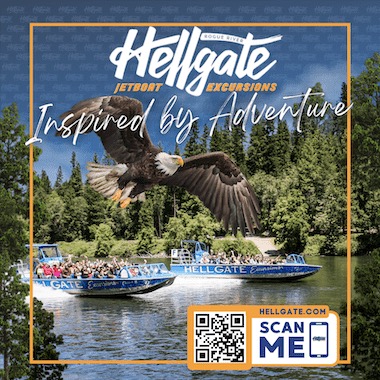Open year-round, Wildlife Safari also hosts a walk-though exhibit displaying some of the zoo’s smaller animals. Other amenities at its Safari Village include a children’s petting zoo, a village train, a full-service cafeteria and gift shop. Keeper talks are offered daily.

During the 4.5-mile drive-through loop, we’re treated to close-ups of wildebeests, hippopotamuses, grizzly bears, lions, elephants and even the new national mammal, the American bison. As Mate, the 18-foot male giraffe lumbers up the road ahead of us, tour guide Sheilah Swanson explains that the animal activity at the park changes throughout the day. Sheilah recommends visitors get to the park first thing in the morning, take the tour, and go around again the end of the day.
“It’s like seeing a whole bunch of different animals,” she says. On this summer day, baby animals, including six lion cubs and eight bison, remain close to their mothers. Just two months earlier, on May 15, they were joined by the park’s newest celebrity, baby Kelley, the first giraffe born in the park’s 44-year history. “We got the call that the legs started poking out at 6 a.m. Sunday morning,” explains Benji Alcantar, one of the park’s two onsite veterinarians. “We’re here at 6:10 – the ungulate (hoofed mammal) staff and ourselves.” Kelley was born at 8 a.m. At birth, the male calf weighed 175 pounds and stood 6 foot three inches from head to toe.
“We were a bunch of first-timers,” says Benji. “Kelley was the first giraffe born in the park. First for the vets. It was my dream to see a giraffe born.” Kelley ventured outside with mom Miya approximately one month after his birth, and is now one of the park’s major attractions. He’s also part of the park’s emphasis on species preservation. “Being able to help with the giraffe population species is very exciting for us,” says keeper Sylvia Molina.Later in the day we pose for photos with Mchumba, one of the park’s three cheetah ambassadors. Mchumba represents the long line of nearly 200 cheetahs born at the park since it opened in 1972.
With cheetah numbers dwindling in the wild, having successful breeding programs allows zoos to educate their guests and conduct research that helps the endangered species. Through its partnership with the Association of Zoos and Aquariums’ Species Survival Plan for cheetahs, cubs born at the park have populated zoos across the U.S.“Wildlife Safari is one of the leading centers for cheetah breeding in the world, and the most successful in the United States,” says Benji.

Pancake, another of the park’s ambassadors and one of 17 cheetahs in residence, lays in the shade next to her canine companion, Dayo the Rhodesian Ridgeback. Born on the same day in February, 2015 this unusual pairing makes appearances in the community and at school assembly programs. While Dayo interacts with kids, Pancake shows off her unique cheetah traits during their visits. They also help spread the conservation message. In Africa, conservationists use livestock guard dogs to keep wild cheetahs away from local farms. This effort helps lower the annual number of cheetahs being shot in those regions.
While driving through Wildlife Safari allows you to view the animals from the comfort of your own vehicle, Sheilah Swanson recommends you take time to add on one of the park’s many close-up encounters. Park keepers provide commentary as you feed a giraffe, examine the dental hygiene of a hippo, or greet one of the Sumatran tiger sisters. Close-up encounters with cheetahs like Mchumba and baby Kelley and mom Miya are part of this program.“ For the guest, it’s fun,” explains Steve Tranter, park trainer. For the staff, “it’s our way of giving the animals a non-cursory examination. It’s a bonding experience that keeps the animals healthy and engaged.” According to Benji Alcantar, “Wildlife Safari is a unique and magical place for all of us.” We couldn’t agree more.


